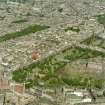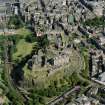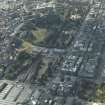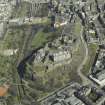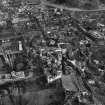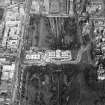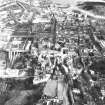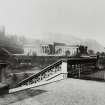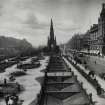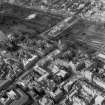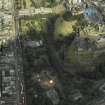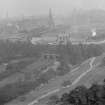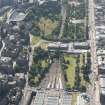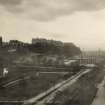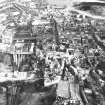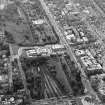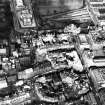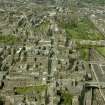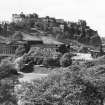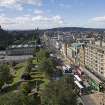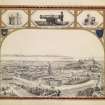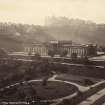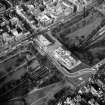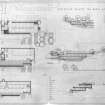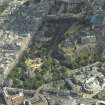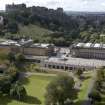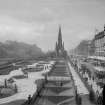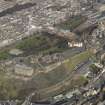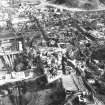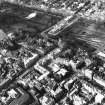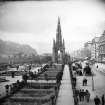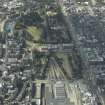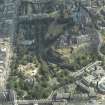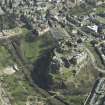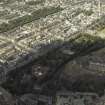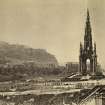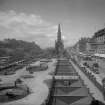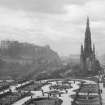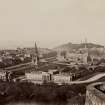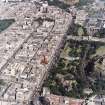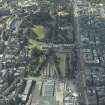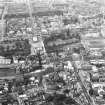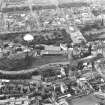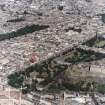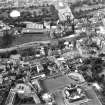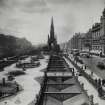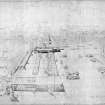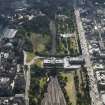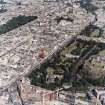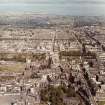Edinburgh, The Mound, National Gallery Of Scotland
Art Gallery (19th Century)
Site Name Edinburgh, The Mound, National Gallery Of Scotland
Classification Art Gallery (19th Century)
Canmore ID 68129
Site Number NT27SE 243
NGR NT 25433 73742
Datum OSGB36 - NGR
Permalink http://canmore.org.uk/site/68129
- Council Edinburgh, City Of
- Parish Edinburgh (Edinburgh, City Of)
- Former Region Lothian
- Former District City Of Edinburgh
- Former County Midlothian
NT27SE 243 25433 73742
Incorporated Royal Scottish Academy until 1911.
ARCHITECT: William Playfair 1851
Thomas Hamilton -projected National Gallery & Royal Scottish Academy buildings 1848
(John Kinross - design for a new gallery with Usher Hall on Lothian Road site)
REFERENCE: EDINBURGH UNIVERSITY LIBRARY-PLANS
Playfair Collection -35 sheets (see P.26)
-1850-130 (P.38)
REFERENCE: SCOTTISH RECORD OFFICE
NG/6/5/2 Design of trowel for ceremony of laying foundation stone of National Gallery by the Prince Consort. July 30th 1850.
Building Committee Minutes: "The Design of a Trowel prepared by Mr Christie, and to be executed in Silver Gilt for His Royal Highness Prince Albert was then shown to the Committee and Mr MacKay of the firm of MacKay and Cunningham, Silversmiths being in attendance and having shown some specimens of trowels and of the style of engraving, the Design of Mr Christies' trowel was approved of, and the trowel was ordered to be got ready immediately-the Arms of the Board of Manufactures to be engraved upon it in front, with a presentation inscription as follows: 'Presented by the Board of Trustees for Manufactures &c to His Royal Highness The Prince Albert on laying the first stone of the National Gallery at Edinburgh. 30th August 1850'".
Subsequently at the meeting of 27th August the finished trowel was "much admired" and the case was still making.
Minutes of Building Committee: Building completed by James Hamilton, clerk to W H Playfair, on death of Playfair. Trowel designed by Christie for foundation ceremony. First design altered on grounds of economy-Contractor lind, carpenter fails. RSA side finished first. Cost 50,430 14 7. [pounds].
Edinburgh, The Mound, National Gallery of Scotland.
NMRS REFERENCE.
Ian Gow: Notes on the building history. Letter to the keeper, National Gallery of Scotland, 3 Sept 1985.
Photographic Record (1970)
Excavation (1 August 2021 - 30 November 2021)
NT 25433 73742 A programme of archaeological investigation was carried out at the Scottish National Gallery in relation to the works being undertaken to alter and extend the underground facilities at the Gallery. The Gallery is a Playfair-designed, A Listed building. The wider site is the Mound, an artificial bank of material laid down in the late 18th and early 19th centuries from excavations and building in the New and Old Towns.
An area to the S of the Gallery building was excavated to the required formation level after the insertion of concrete piles and props. This allowed the first archaeological investigation of the deposits that constitute the Mound, their deposition and character. The deposits could be characterised as well-ordered dumps of material cast from the E side of the Mound, sloping down from E to
W. The deposits appeared in five broad types: coarse sands; mixed dark earth and clayey material; redeposited bedrock material; builder’s dross and demolition material, composed of sandstone rubble and lime mortar; and gleyed mixed clays. The pattern of deposition was stable throughout the area excavated, and suggests a well-ordered, controlled depositional process. Concentrations of discarded material culture were not high, but included ceramics,
oyster shell and a limited amount of animal bone, a small ceramic assemblage, clay tobacco pipe fragments, ceramic building material, glass, and architectural fragments, mostly confined to the demolition rubble deposit types. A lack of general household waste and midden material suggests that the area was not used as a generalised garbage dump. An investigation of the historical sources also suggests that the earthen mound was in origin a form of ‘desire path’, created by individual city dwellers as a solution to a lack of practical routes across the city, only later institutionalised by Council mandate.
Archive: NRHE (intended)
Funder: National Galleries of Scotland
Philip Karsgaard – Addyman Archaeology
(Source: DES Volume 23)











































































































